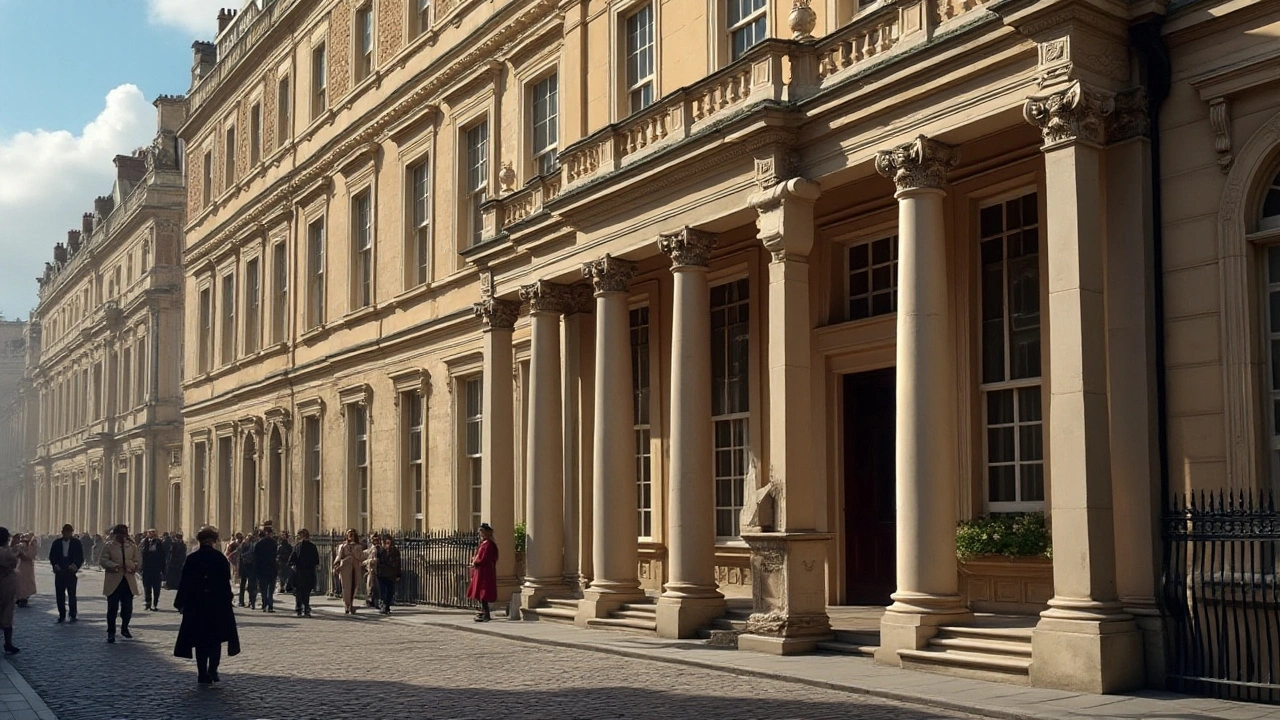Georgian architecture, characterized by its symmetry and proportion, offers a fascinating insight into the social hierarchies of its time. This style, predominant from the early 18th to the early 19th century, reflected the wealth and social position of its inhabitants through ornate designs and spatial organization. The grandeur of these buildings, often featuring lavish facades and grand entrances, indicated the rising affluence of the emerging middle class. These architectural marvels not only provide an aesthetic delight but are also key to understanding the societal context of the Georgian era.
Social hierarchies in architecture: read power and class in buildings
Buildings and public spaces rarely happen by accident. They’re shaped by money, politics, religion, and social status. Want to know who held the power in a city or why certain neighborhoods feel different? You can often tell by looking at scale, position, materials, and access. This page helps you spot those clues so you can read the social story a building tells.
Quick ways to read power in a building
Start with scale. Big, tall structures — government halls, cathedrals, mansions — were built to impress and dominate. Small, tight housing suggests a working-class area or a dense city quarter. Next, check position: does the building sit on a hill, face a main square, or hide down a back alley? High ground and frontal placement usually signal prestige.
Look at who can enter. Grand staircases, ceremonial entrances, and gated courtyards control access and separate insiders from the public. Meanwhile, many small doors, shared courtyards, and narrow passages point to communal living or lower status. Materials and detail matter too: marble, carved stone, and ornate facades often mark wealth; plain brick or rough concrete often mark practicality or limited funds.
Consider visibility and connection. Monuments, plazas, and boulevards are designed to be seen and to guide movement. Elite neighborhoods tend to have wide streets, parks, and views; industrial or marginalized areas often sit near transport hubs, noisy infrastructure, or behind buffer zones. Finally, note style choices: classical columns and symmetrical facades often reference authority and tradition, while experimental or austere designs can signal political change or new social ideals.
Where to look next (site reads and examples)
If you want concrete examples, check posts on this site. Colonial Architecture articles show how empires used buildings to project control across continents. Beaux-Arts pieces explain grand civic design and how it shaped city centers. Ancient Roman Architecture highlights engineering choices that supported empire power. Constructivist and Neo-Futurism articles show the opposite: styles meant to signal political or cultural shifts, not old-world status.
Use these quick field exercises: walk a central square and note the three most visible buildings — who used them? Walk uphill and downhill and compare styles. Count entrances and observe who seems to be invited. Photograph facades for detail study later. Over a few walks you’ll notice repeating patterns: architecture doesn’t just hold people, it tells who mattered when it was built.
If you’re researching a site or writing about a building, list concrete clues: scale, position, materials, access, visibility, and style. Match those clues to historical forces—wealth, politics, religion, or industry. That gives you a clear, evidence-based reading of how social hierarchies shaped the place.
Want guided examples? Start with Colonial Architecture, then compare with Beaux-Arts and Ancient Roman entries. For modern shifts in power and style, read Constructivist and Neo-Futurism posts. Each article pairs visual details with social context so you can practice reading buildings with confidence.

